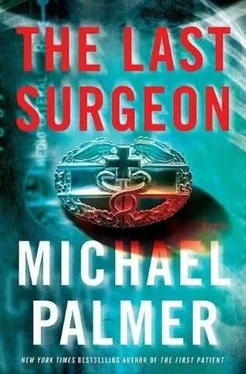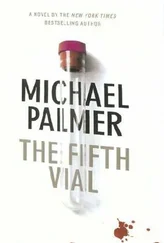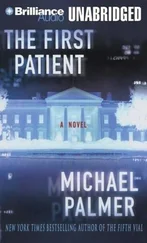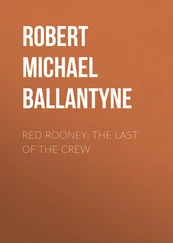Saul Mollender and Noreen Siliski sat next to each other, behind and to the right of the others. The tension in the room was high.
In half a minute, the static gave way to a set of standard legal notices, yellow on black, that included a summary of the HIPAA laws surrounding patient confidentiality, an outline of who was allowed to view the recording and for what purposes, and the name of the editor, Annette Furst, Department of Medical records. Finally came the hospital name, date, and operating room number. Jillian was rigid in her seat, squeezing blood from Nick’s hand.
The introductory information was in the same yellow print.
PATIENT: Aleem Syed Mohammad
Hospital ID: 881-83-7782-Karachi, Pakistan
Condition: Cardiac rhabdomyoma
Procedure: Cardiopulmonary bypass; excision of rhabdomyoma; cardiac reconstruction
Present in the Operating Room:
Surgeon: Abigail Spielmann, M.D.
Asst. Surgeon: Lewis Leonard, M.D.
Cardiac Surgical Resident: Yasmin Dasari-Olan, M.D.
Anesthesiologist: Thomas Landrew, M.D.
Perfusionist: Roger Pendleton, CCP, Cert. ABCP
Scrub Nurse: Kimberly Fox
Circulating Nurse: Cassandra Browning-Leavitt
Medical Student: Yu Jiang
Nursing Student: Belle Coates
Nick felt the energy in Jillian’s grip increase at the sight of her sister’s name. He froze the picture.
“Do we know who Dr. Abigail Spielmann is?” he asked.
“I think she was brought in from another hospital,” the Mole replied. “Probably an expert in cardiac tumors like this one.”
“She must be big stuff if the cardiac surgical chief would allow it,” Jillian said.
Nick undid the pause.
The printing gave way to a gleaming operating room. Three cameras, according to Mollender-one of them straight down into where the patient would be placed on the now empty table; one up from the foot; and the other giving a wide-angle shot of the entire operating room. The video editor’s job, Mollender explained, was to mix the various camera angles into a cohesive and useful presentation.
The opening sequence was shot from the wide-angle camera and showed the perfusionist, wearing scrubs, a mask, and hair cover, but set back from the sterile field where the surgeons would be working. Seated behind the long heart-lung bypass machine, he looked like a concert pianist preparing for a performance. He was chatting with the scrub nurse.
“Need anything?” the perfusionist said. “Cassandra’s right outside.”
The audio and visual feeds were excellent.
“As a matter of fact, yes,” the scrub nurse replied. “The only thing from Dr. Spielmann’s instrument list that I don’t have here is a Loc-Ness tissue stabilizer. Could you ask Cassandra to get one for me, please?”
“Will do. Have you met Spielmann?”
“She came by to see me a little while ago. She seems terrific.”
“I thought the same thing. Be right back.”
The scrub nurse was positioned just above and behind where Dr. Abigail Spielmann would be working. She was ready for the case-gloved, gowned, and masked, with intense dark eyes looking out from beneath her blue hair covering as she checked through a huge tray of instruments.
At that point there was some obvious editing-eleven minutes according to the running digital time in the upper right corner. The perfusionist was back at his post, and the circulating nurse had appeared and was helping one of the surgeons, a dark-skinned woman, it appeared, into her gloves and gown.
It felt stranger to Nick than he had expected to be viewing OR drama after so long. Between his internship, residency, fellowship in trauma surgery, private practice, and the military, he had been a surgeon for more than nine years before the explosion that took Sarah-nearly as long as he had been away from his specialty.
Suddenly, Jillian’s grasp on his hand intensified. Two people, a man and a woman, both in scrubs, mask, and hair covers, entered through the main doors and took a position against the wall, well away from the table.
“That’s her,” Jillian whispered loudly. “That’s Belle.”
Nick was able to make out a tallish, slender woman with very attractive eyes.
“If Dr. Spielmann has no objections,” the circulating nurse told Belle and the medical student, “we’ll get you up on risers so you can see more than people’s backs. Either way, the procedure will be on that screen. Have you both read up on cardiac rhabdomyomas?”
“Yes,” the students said in unison.
Nick felt Jillian stiff en at the sound of her sister’s voice.
“Great,” the circulator went on, “so you know it’s not a cancer that spreads to other parts of the body, but it arises from the inner heart muscle and just keeps growing and taking up space until cardiac function becomes severely compromised.”
There was another lengthy edit, leading to the sudden appearance at the head of the table of the anesthesiologist and, on the left side of the table, another surgeon-the first assistant, Nick assumed, actually remembering Lewis Leonard from the list of players because of a grade-school classmate in Oregon with the same name. At that moment, the main doors burst open and Aleem Syed Mohammad was wheeled in by two men in scrubs, surgical masks, and hair covers. In a short while, the infamous murderer and terrorist lying so peacefully on the stretcher was going to be dead.
Mohammad, eyes closed, probably in a pleasant swoon from his pre-op medication, had a sheet draped across his body from the midchest down. He was a swarthy, rather handsome man, with high cheekbones and narrow features, including a striking aquiline nose. Nick got a brief, clear view of him as he was transferred onto the operating table.
One of the two transport men remained in the room and was posted to Belle’s right, on the other side of the main doors. Nick recalled that such a person was not identified in the roster of those observing the procedure, and speculated that he was a security presence, probably from the CIA. He was a stocky man, of average height, and although only his eyes and throat were exposed, there was something strangely familiar about him.
The door to the scrub room opened and the principal medical player in the scene, Dr. Abigail Spielmann, backed into the room, her hands up in front of her, palms in. She was a surprisingly slight woman, with light blue eyes that sparkled with intelligence despite the distance from the camera. The hand drying and nurse-assisted gowning of the cardiac surgeon was edited out.
“Dr. Landrew,” she said to the anesthesiologist, every word tinged with authority, “anything I should know about in his pre-op examination?”
“His history and examination were done with the help of an interpreter. The patient had not received any medication that would alter his mental status, but he still seemed a little groggy.”
“Despite the grogginess, you trust his signing of the consent form?” Spielmann asked.
“I do. There were three witnesses-two nurses from his floor, and his interpreter.”
“I actually spoke with him after you did,” Spielmann said. “I have been using some tapes to learn a little Arabic. Mr. Mohammad seemed to know what I was saying, which made me very pleased. I was able to pick out a few words he said, but just a few. At the time we spoke, he seemed tired but in command of his faculties. So I agree with you, Dr. Landrew.”
“Excellent.”
“Then are we ready to get this show on the road?”
“Ready.”
“Mr. Pendleton?”
“Ready, Doctor,” said the perfusionist.
Читать дальше












